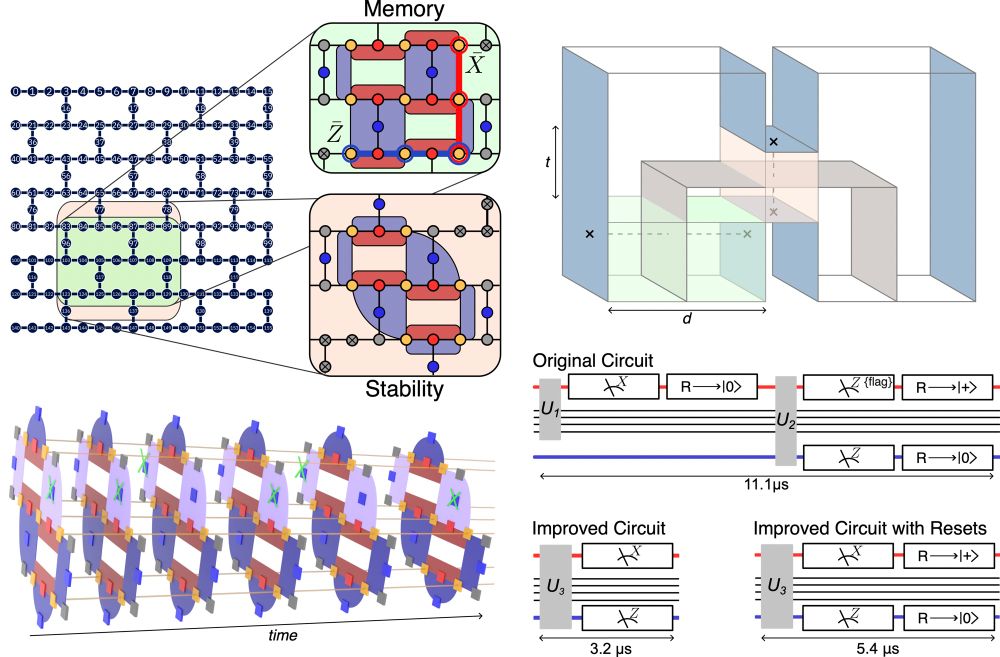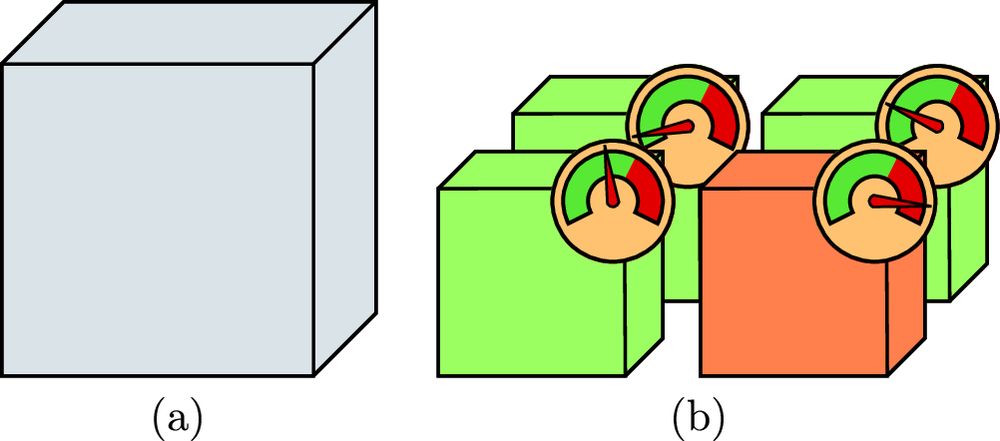
Ben Brown
@benbrown.bsky.social
Research scientist at IBM Quantum
Are you a graduate student looking for experience working on the theoretical problems we need to solve to build a quantum computer? We are currently accepting applications for internship positions in the quantum computing theory team at IBM for summer 2026.
ibmglobal.avature.net/en_US/career...
ibmglobal.avature.net/en_US/career...

Intern 2026: Quantum Computing Theory
ibmglobal.avature.net
October 14, 2025 at 9:11 AM
Are you a graduate student looking for experience working on the theoretical problems we need to solve to build a quantum computer? We are currently accepting applications for internship positions in the quantum computing theory team at IBM for summer 2026.
ibmglobal.avature.net/en_US/career...
ibmglobal.avature.net/en_US/career...
New work just published
journals.aps.org/prl/abstract...
I was sat on this result for a couple of years but as you can see in the acknowledgements sometimes I need to be told three times to get things done (and sometimes I need to be asked more than three times, sorry @kenbrownquantum.bsky.social)
journals.aps.org/prl/abstract...
I was sat on this result for a couple of years but as you can see in the acknowledgements sometimes I need to be told three times to get things done (and sometimes I need to be asked more than three times, sorry @kenbrownquantum.bsky.social)
August 15, 2025 at 8:02 AM
New work just published
journals.aps.org/prl/abstract...
I was sat on this result for a couple of years but as you can see in the acknowledgements sometimes I need to be told three times to get things done (and sometimes I need to be asked more than three times, sorry @kenbrownquantum.bsky.social)
journals.aps.org/prl/abstract...
I was sat on this result for a couple of years but as you can see in the acknowledgements sometimes I need to be told three times to get things done (and sometimes I need to be asked more than three times, sorry @kenbrownquantum.bsky.social)
Reposted by Ben Brown
Excited to share our first major result from our IARPA Entangled Logical Qubits team!
arxiv.org/abs/2504.07258
@benbrown.bsky.social @universal-soup.bsky.social @evanhockings.bsky.social @georgianixon.bsky.social
arxiv.org/abs/2504.07258
@benbrown.bsky.social @universal-soup.bsky.social @evanhockings.bsky.social @georgianixon.bsky.social

April 11, 2025 at 1:06 AM
Excited to share our first major result from our IARPA Entangled Logical Qubits team!
arxiv.org/abs/2504.07258
@benbrown.bsky.social @universal-soup.bsky.social @evanhockings.bsky.social @georgianixon.bsky.social
arxiv.org/abs/2504.07258
@benbrown.bsky.social @universal-soup.bsky.social @evanhockings.bsky.social @georgianixon.bsky.social
Reposted by Ben Brown
Are you a fan of fault-tolerant non-Clifford gates on the 2D surface code?
Have you been wondering what was really going on in the protocols by Bombín and Brown?
We have a new work for you: arxiv.org/abs/2503.15751
Have you been wondering what was really going on in the protocols by Bombín and Brown?
We have a new work for you: arxiv.org/abs/2503.15751

Universal fault tolerant quantum computation in 2D without getting tied in knots
We show how to perform scalable fault-tolerant non-Clifford gates in two dimensions by introducing domain walls between the surface code and a non-Abelian topological code whose codespace is stabilize...
arxiv.org
March 21, 2025 at 4:21 AM
Are you a fan of fault-tolerant non-Clifford gates on the 2D surface code?
Have you been wondering what was really going on in the protocols by Bombín and Brown?
We have a new work for you: arxiv.org/abs/2503.15751
Have you been wondering what was really going on in the protocols by Bombín and Brown?
We have a new work for you: arxiv.org/abs/2503.15751
Logic gates can often be understood in terms of topological phases, so I often felt it was a shortcoming of my work on a 2D CCZ gate that I did not see the analogous physical picture. So I am pleased to share our work arxiv.org/abs/2503.15751 where we show the gate was a non-Abelian phase all along!

Universal fault tolerant quantum computation in 2D without getting tied in knots
We show how to perform scalable fault-tolerant non-Clifford gates in two dimensions by introducing domain walls between the surface code and a non-Abelian topological code whose codespace is stabilized by Clifford operators. We formulate a path integral framework which provides both a macroscopic picture for different logical gates as well as a way to derive the associated microscopic circuits. We also show an equivalence between our approach and prior proposals where a 2D array of qubits reproduces the action of a transversal gate in a 3D stabilizer code over time, thus, establishing a new connection between 3D codes and 2D non-Abelian topological phases. We prove a threshold theorem for our protocols under local stochastic circuit noise using a just-in-time decoder to correct the non-Abelian code.
arxiv.org
March 21, 2025 at 7:36 AM
Logic gates can often be understood in terms of topological phases, so I often felt it was a shortcoming of my work on a 2D CCZ gate that I did not see the analogous physical picture. So I am pleased to share our work arxiv.org/abs/2503.15751 where we show the gate was a non-Abelian phase all along!
Reposted by Ben Brown
Post selection in QEC is not cheating 🤣, but can be scalable and significantly reduce your resources overheads! Check out our newly published paper in @commsphys.bsky.social rdcu.be/d1LuM, a great collab with Sam Smith and @benbrown.bsky.social @sydneyphysics.bsky.social

Mitigating errors in logical qubits
Communications Physics - Quantum error correction produces an enormous amount of data about the quantum system, including information about whether an uncorrectable error is likely. In this work...
rdcu.be
November 29, 2024 at 5:56 AM
Post selection in QEC is not cheating 🤣, but can be scalable and significantly reduce your resources overheads! Check out our newly published paper in @commsphys.bsky.social rdcu.be/d1LuM, a great collab with Sam Smith and @benbrown.bsky.social @sydneyphysics.bsky.social
Our work, led by Riddhi Gupta, was just published in Nature
nature.com/articles/s41...
Thanks to my co-authors for all their hard work.
nature.com/articles/s41...
Thanks to my co-authors for all their hard work.

Encoding a magic state with beyond break-even fidelity - Nature
A scheme to prepare a magic state, an important ingredient for quantum computers, on a superconducting qubit array using error correction is proposed that produces better magic states than those that ...
nature.com
January 10, 2024 at 4:29 PM
Our work, led by Riddhi Gupta, was just published in Nature
nature.com/articles/s41...
Thanks to my co-authors for all their hard work.
nature.com/articles/s41...
Thanks to my co-authors for all their hard work.

